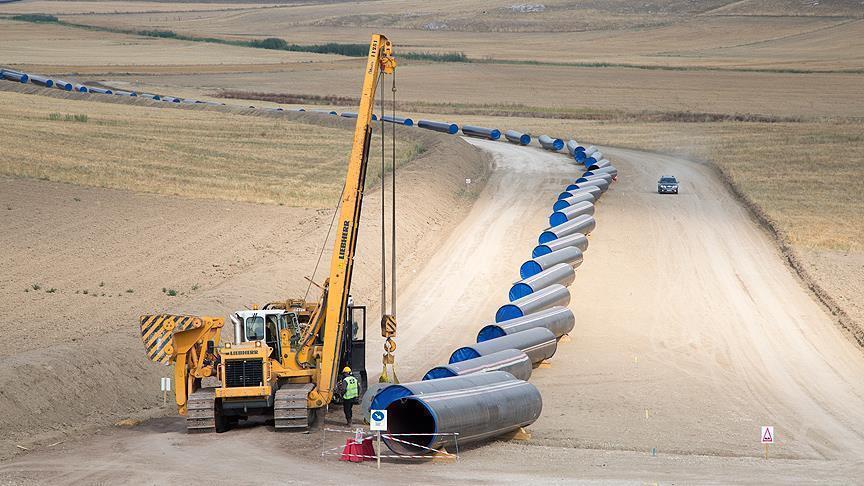
The first line of the TurkStream natural gas project will reach the Turkish shore in May of this year and will be in service at the end of 2019, the project management team told state-run Anadolu Agency in an exclusive interview on Jan. 5.
With the aid of the world’s biggest construction vessel, the Pioneering Spirit, the two parallel pipeline project, which consists of pipe production, offshore and onshore pipelaying and a receiving terminal, is set for a spring launch.
The first line is intended for the Turkish market, while the second targets gas supplies to countries in southern and southeastern Europe. South Stream, which is a subsidiary of Gazprom, the major Russian partner in the project, will build the offshore section of the project.
“It will be in May that the first line will reach the Turkish shore. After that, the vessel [Pioneering Spirit] will have another job. Then, it will return to the Black Sea to work on the second line of the TurkStream. We expect that it will return in the third quarter to the Black Sea and then continue with the launch,” TurkStream’s spokesman Sander van Rootselaar said.
According to van Rootselaar, the project’s total capacity of 31.5 billion cubic meters of natural gas will meet the annual energy demands of 15 million households.
The project will be able to produce the equivalent of 126,000 wind turbines and 39 nuclear units.
“That’s a massive amount of energy to be allocated to Turkish and European energy markets,” van Rootselaar said.
Describing the project as “a very major contribution to energy security,” he expects that with the project, Turkey will become a key supply link for southern and southeastern Europe.
Demand is rising in the European gas market at a time when domestic production is in decline, he said, and as a result, he affirmed that the TurkStream would play a significant role in southeastern Europe, particularly with some underdeveloped markets in the Balkans that could benefit from TurkStream gas.
‘700 km of construction completed’
Van Rootselaar also confirmed that the construction of 700 kilometers out of a total of 1,860 kilometers of the two lines of the subsea section of the project had been completed.
With the advanced technology of the Pioneering Spirit, the vessel is equipped to deliver four kilometers of pipelaying daily even in harsh weather conditions and has also reached records of over 5 kilometers per day.
“We have seen that the speed of pipelaying of Pioneering Spirit is faster than we expected. It is the first pipelaying job of this vessel,” he said.
“We have increased the number of supply vessels in order to supply enough pipes to deliver 4 kilometers each day and even with records of over 5 kilometers,” he added.
He said that the company aimed to either eliminate or as much as possible minimize the project’s impact on the environment specifically in the locality that covers the pipeline’s route. This includes the area close to Turkish landfall near the town of Kıyıköy, located approximately 100 kilometers west of Istanbul.
Van Rootselaar also noted that a joint venture between Turkey’s state-owned crude oil and natural gas pipeline and trading company BOTAŞ and Gazprom would build the onshore section of the project that would extend to
Europe via Turkey.
“As soon as we hit the shore in Turkey, from there on it’s the responsibility of BOTAS to create the extension and through Turkey it’s the responsibility of BOTAS-Gazprom joint venture to construct the line towards the European border and the extension through Europe. That’s the responsibility of pipeline companies in various nations,” he explained.
Greece and Bulgaria candidates for European part of project
The official said negotiations with Greece and Bulgaria for the European side of the project were ongoing and the parties were making good progress.
“There is a positive vibe surrounding the project,” he said with Serbia and Hungary showing interest for participation at a governmental level.
“Before we deliver the first gas to Turkey at the end of 2019, a decision should be made about the second line,” he added.